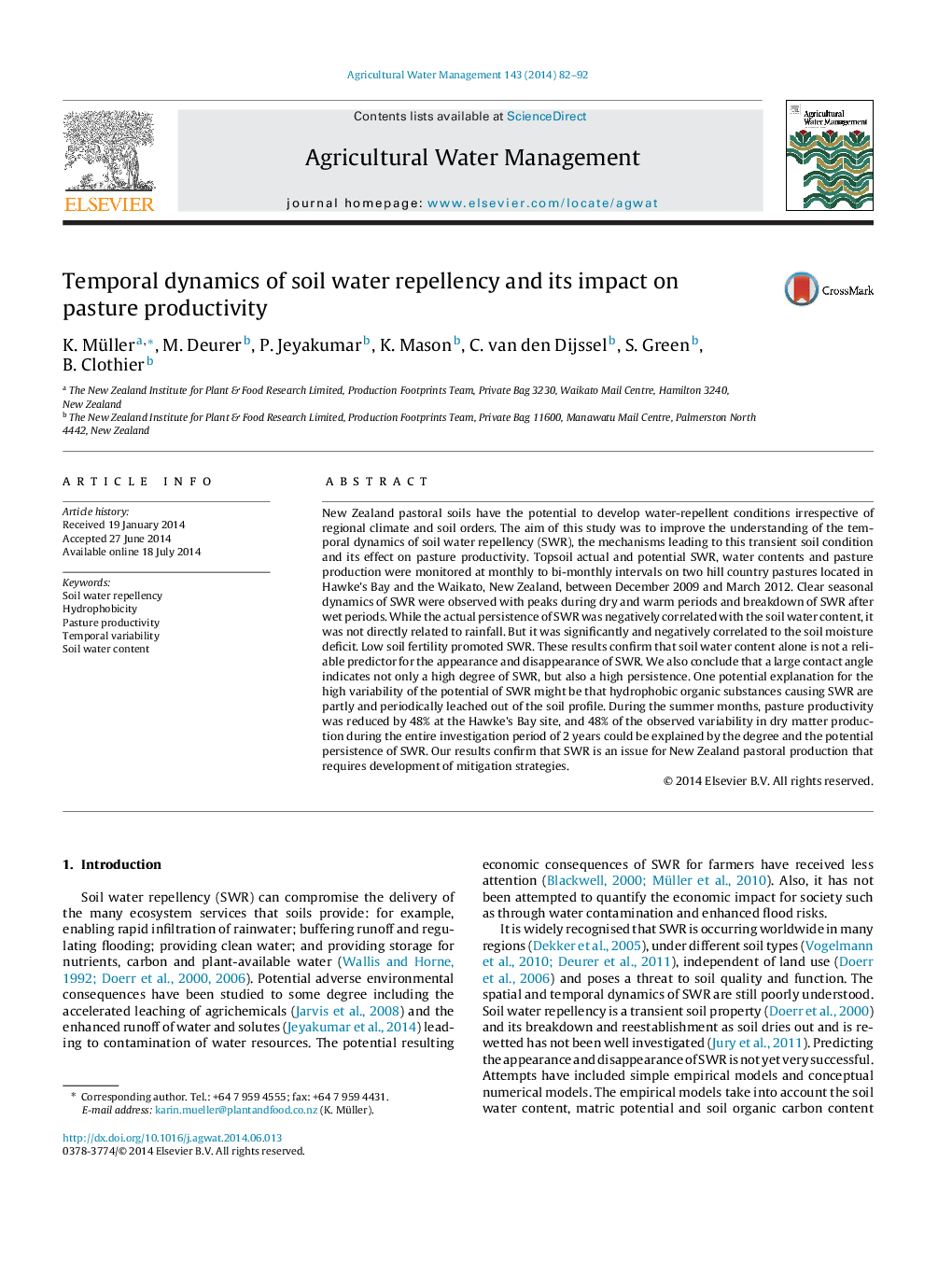| کد مقاله | کد نشریه | سال انتشار | مقاله انگلیسی | نسخه تمام متن |
|---|---|---|---|---|
| 4478632 | 1622936 | 2014 | 11 صفحه PDF | دانلود رایگان |
• Seasonal dynamics of soil water repellency (SWR) found with peaks in summer.
• Persistence of SWR negatively correlated to soil moisture deficit and positively to temperature.
• Low soil fertility promoted SWR.
• Pasture productivity was reduced by 48% at one site during summer 2009/10.
• Remarkably lower dry matter production could be explained by higher persistence of SWR.
New Zealand pastoral soils have the potential to develop water-repellent conditions irrespective of regional climate and soil orders. The aim of this study was to improve the understanding of the temporal dynamics of soil water repellency (SWR), the mechanisms leading to this transient soil condition and its effect on pasture productivity. Topsoil actual and potential SWR, water contents and pasture production were monitored at monthly to bi-monthly intervals on two hill country pastures located in Hawke's Bay and the Waikato, New Zealand, between December 2009 and March 2012. Clear seasonal dynamics of SWR were observed with peaks during dry and warm periods and breakdown of SWR after wet periods. While the actual persistence of SWR was negatively correlated with the soil water content, it was not directly related to rainfall. But it was significantly and negatively correlated to the soil moisture deficit. Low soil fertility promoted SWR. These results confirm that soil water content alone is not a reliable predictor for the appearance and disappearance of SWR. We also conclude that a large contact angle indicates not only a high degree of SWR, but also a high persistence. One potential explanation for the high variability of the potential of SWR might be that hydrophobic organic substances causing SWR are partly and periodically leached out of the soil profile. During the summer months, pasture productivity was reduced by 48% at the Hawke's Bay site, and 48% of the observed variability in dry matter production during the entire investigation period of 2 years could be explained by the degree and the potential persistence of SWR. Our results confirm that SWR is an issue for New Zealand pastoral production that requires development of mitigation strategies.
Journal: Agricultural Water Management - Volume 143, September 2014, Pages 82–92
